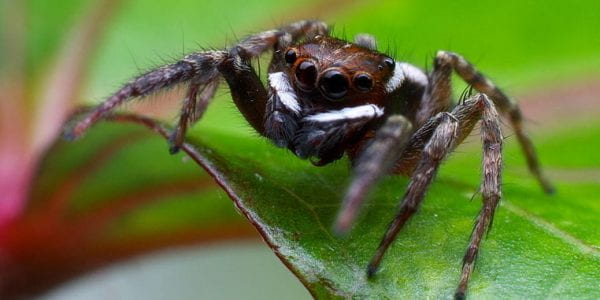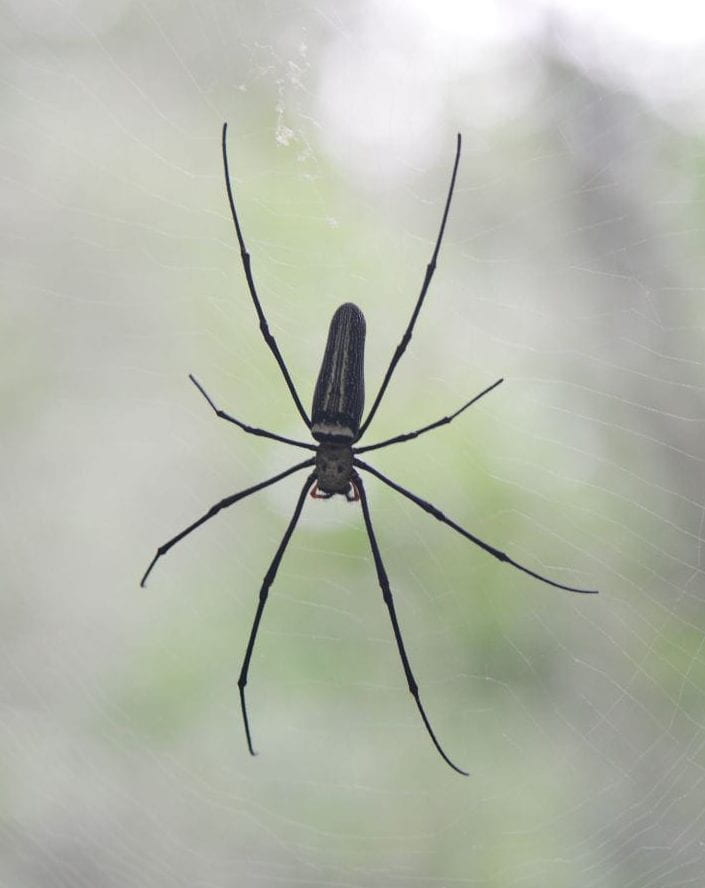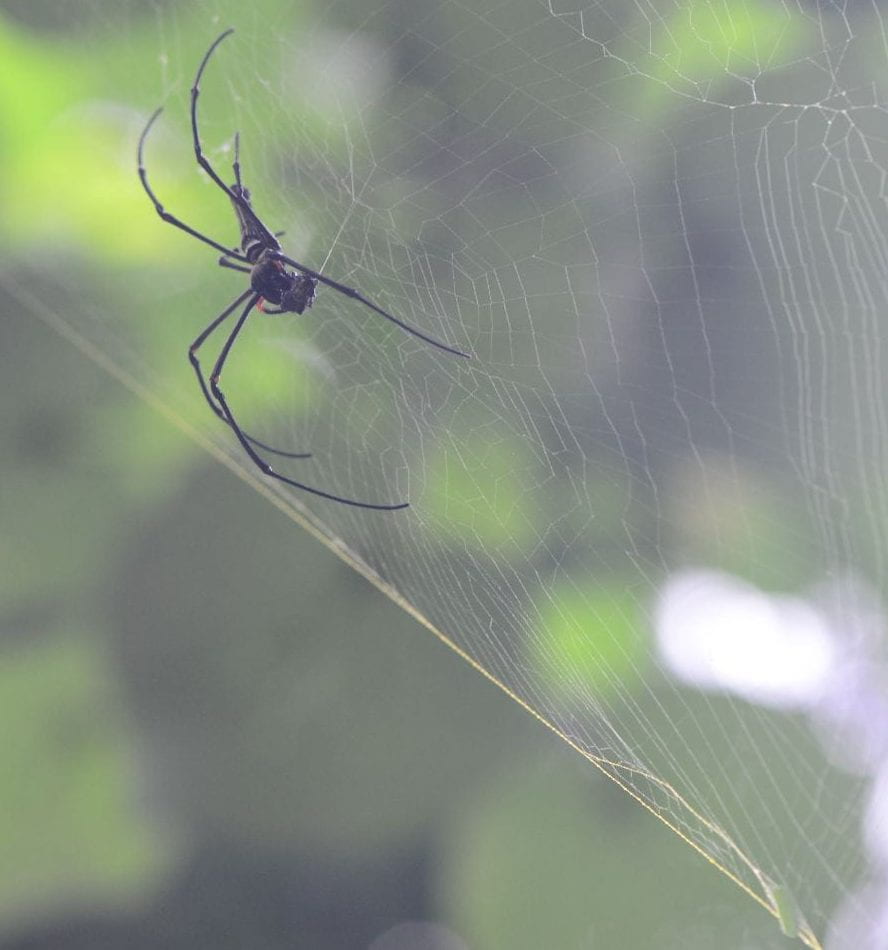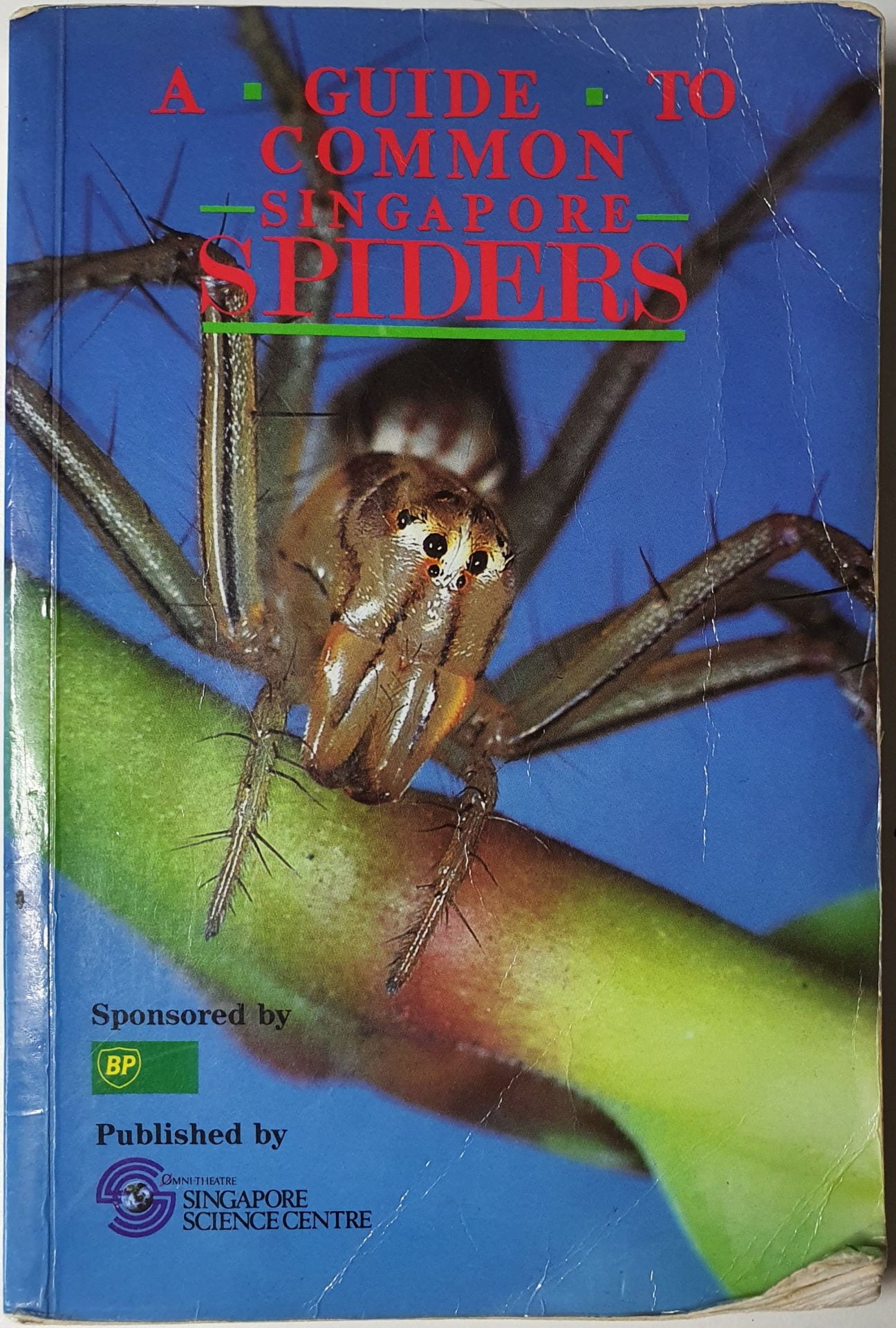Hello everyone! I am Justin Thu from the environmental studies, year 1. As you can guess from this blog’s themes and images, I love spiders. I have since kindergarten when I frequently went to the neighbourhood park with my grandparents. Finding spiders like the Golden Web Spider (Nephilia maculata) and the Hasselt’s Spiny Spider (Gasteracantha hasseltii) were easy back then. My fearless grandpa would use an empty clear bottle to catch one of them (sadly destroying the web in the process) just to let six-year-old me give a good look at it. He would release the spider onto a nearby plant soon after.

“Spiny Orb Weaver Spider On A Dry Leaf” by giovzaid85 is licensed under CC BY-ND 2.0.
During one of my visits to the Singapore Science Centre, my father bought me this book called “A Guide To Common Singapore Spiders”, published by Singapore Science Centre, written by Joseph K H Koh. This book further fueled my interest in spiders and I started to actively search for them during park visits. It became a habit I cultivated and still have today. A few nights ago, I noticed a young female Adanson’s House Spider (Hasarius adansoni) in my room. Sadly, she would not let me handle her BUT I managed to feed her a mosquito that I caught!
Over the years of visiting parks and nature reserves, like MacRitchie Reservoir, Sungei Buloh Wetland Reserve, Bukit Timah Nature Reserve, and Dairy Farm park, I noticed that it was getting increasingly difficult to find spiders (arachnophobes rejoice). Was it caused by increasing number of people visiting? Changing climate? More Javan Myna birds? Is it just a me that couldn’t find them? I am uncertain and I am not alone. We don’t really know, with certainty, just how many spiders are there are, let alone what affects them. We’re still finding species new to Singapore1! The late Dr Norman Platnick, a highly regarded arachnologist whom has described over 1600 new spider species, estimates that there are 50000 species we have yet to discover2
“With great power, comes great responsibility”, a famous phrase known to many Marvel fans, a phrase held to heart by Spider-man. Some might think the phrase does not apply to us mortals but I beg to differ. We are the most powerful and influential creatures on Earth so why do we not act proportionally responsible? In this blog, I will be focusing on spiders, their importance to the environment and us, popularity (or lack thereof) by us which will affect how we care of spiders, how we are threatening them, how little is known their populations and human-nature interaction, and the pet trade. I hope you will look at your neighbourhood spider in a friendly light!
Reference:
- Lin Y, Koh JKH, Koponen S, Li S. Taxonomic notes on the armored spiders of the families Pacullidae and Tetrablemmidae (Arachnida, Araneae) from Singapore. ZooKeys. 2017;661(661):15-60
- https://www.amnh.org/explore/videos/biodiversity/seeking-spiders-biodiversity-on-a-different-scale
- (Table 1a) https://www.iucnredlist.org/resources/summary-statistics#Summary%20Tables
- Profile image of male Hasarius Adansoni Spider by Nhobgood Nick Hobgood is licensed under CC BY-SA 3.0.
- Featured image of lawn wolf spider by me
Table data sources:
- Mammal Diversity Database. 2020. www.mammaldiversity.org. American Society of Mammalogists. Accessed 2020-09-23. Licensed under CC BY 4.0
- Uetz, P., Freed, P. & Hošek, J. (eds.) (2020) The Reptile Database, http://www.reptile-database.org, accessed 2020-09-23
- Frost, Darrel R. 2020. Amphibian Species of the World: an online reference. Version 6.1 (2020-09-23). Electronic Database accessible at https://amphibiansoftheworld.amnh.org/index.php. American Museum of Natural History, New York, USA. ( Copyright © 1998-2020 Darrel R. Frost and American Museum of Natural History. All Rights Reserved. Each document delivered from this server or web site may contain other proprietary notices and copyright information relating to that document. The following citation should be used in any published materials which reference the web site.)
- Handbook of the Birds of the World and BirdLife International. 2019. Handbook of the Birds of the World and BirdLife International digital checklist of the birds of the world.
Version 4. Available at: http://datazone.birdlife.org/userfiles/file/Species/Taxonomy/HBW-BirdLife_Checklist_v4_Dec19.zip. Accessed: 2020-09-23 - Based on Frick, R. Eschmeyer, W.N. and Van der Lan, R. (eds). 2020. Eschmeyer’s Catalog of Fishes: genera, species, references
(http://researcharchive.calacademy.org/research/ichthyology/catalog/fishcatmain.asp). Accessed: 2020-09-23





